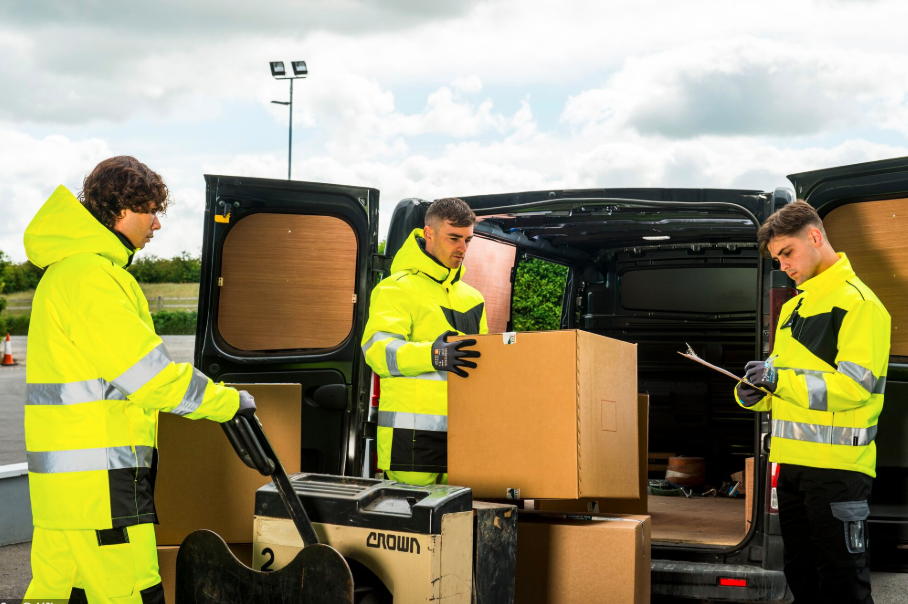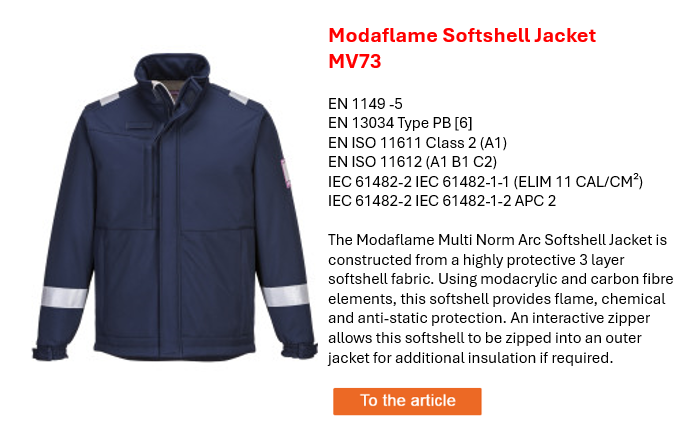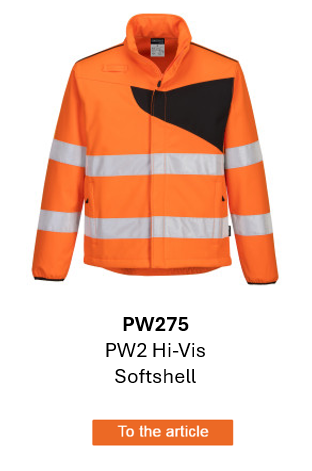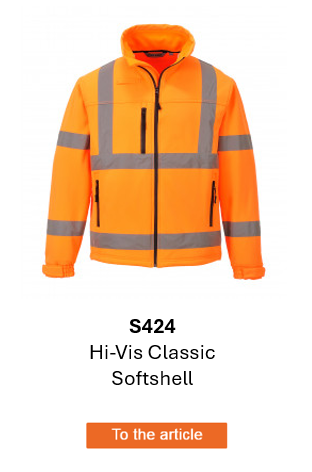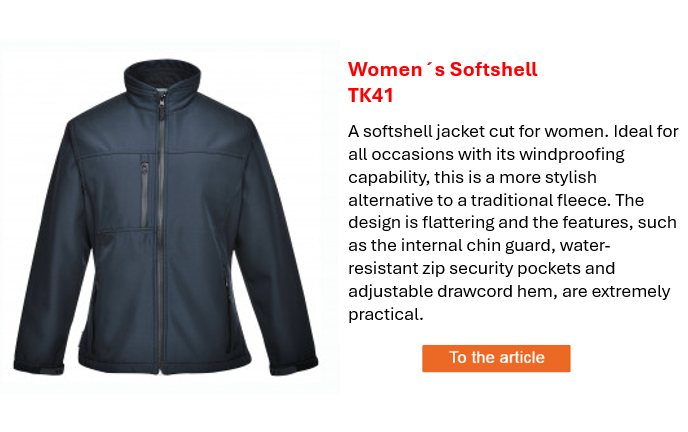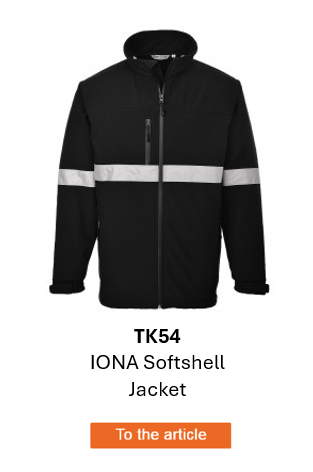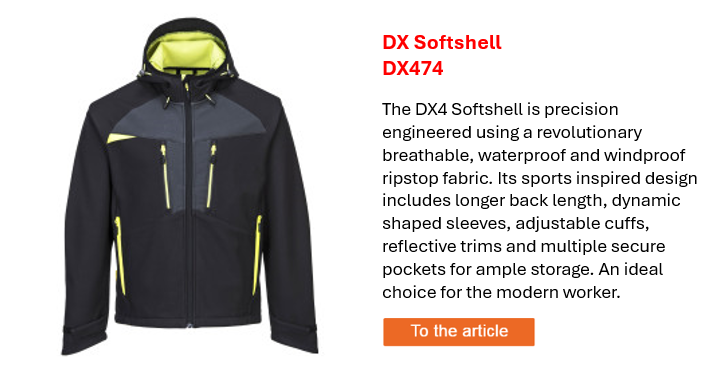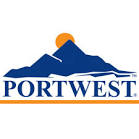When autumn temperatures fluctuate, choosing the right workwear is essential. Softshell work jackets combine wind and weather protection, freedom of movement, and breathability—making them the ideal solution for outdoor work. Whether it’s a high-visibility jacket, flame-retardant softshell, waterproof design, women’s fit, or hooded model: there’s a suitable option for every industry and task. Many softshell jackets also meet important European Standards (EN), ensuring safety and quality.
1. Flame-retardant softshell jackets – Safety from heat and sparks
In industries such as metalworking, welding, or energy supply, protection against heat and flames is indispensable. Flame-retardant softshell work jackets meet standards like EN ISO 11612 (protection against heat and flames) or EN ISO 14116 (limited flame spread) and are reliable companions in critical situations.
Advantages:
- Protection from sparks, heat, and brief flame contact
- Freedom of movement despite additional safety features
- Ideal for changeable weather in transitional seasons
2. High-visibility softshell jackets – Be seen in any weather
For those working in road construction, building sites, or logistics, visibility is a must. High-visibility softshell jackets in compliance with EN ISO 20471 provide fluorescent colours and reflective strips for maximum safety.
Advantages:
- High visibility in daylight and darkness
- Comfortable to wear thanks to breathable softshell material
- Protection against wind and light rain
3. Women’s softshell jackets – Fit and comfort
Specially tailored women’s softshell work jackets offer an ergonomic fit and high comfort, ensuring the jacket sits perfectly even during active movement.
Advantages:
- Fit specifically designed for the female body shape
- No slipping or restriction while working
- Available in many standard-compliant versions such as EN ISO 20471 or EN 343
4. Waterproof softshell jackets – Stay dry in the rain
Not all softshells are waterproof—but models certified to EN 343 provide tested protection against rain and wind. With membrane technology, these jackets remain breathable while reliably keeping out moisture.
Advantages:
- Ideal for outdoor work in rainy conditions
- Comfortable feel thanks to moisture regulation
- Durable and robust for daily use
5. Hooded softshell jackets – Extra protection from wind and weather
For work requiring extra protection from wind, rain, or dust, hooded softshell jackets are the right choice. Many models feature removable or adjustable hoods.
Advantages:
- Flexible adaptation to weather conditions
- Additional protection for head and neck
- Compatible with helmets or hats
Key advantages of softshell work jackets at a glance
- Breathable: Regulates body temperature
- Weather-resistant: Protection from wind and light to heavy rain
- Flexible: Stretch materials for unrestricted movement
- Lightweight: Comfortable even during long shifts
- Standards-compliant: Many models meet EN ISO 20471, EN ISO 11612, or EN 343
For the transitional season between summer and autumn, softshell work jackets are the perfect choice. They offer the optimal mix of protection, comfort, and flexibility—and are available in versions that meet specific safety requirements. Whether high-visibility, waterproof, flame-retardant, women’s fit, or hooded softshell, every professional can find the right gear.














